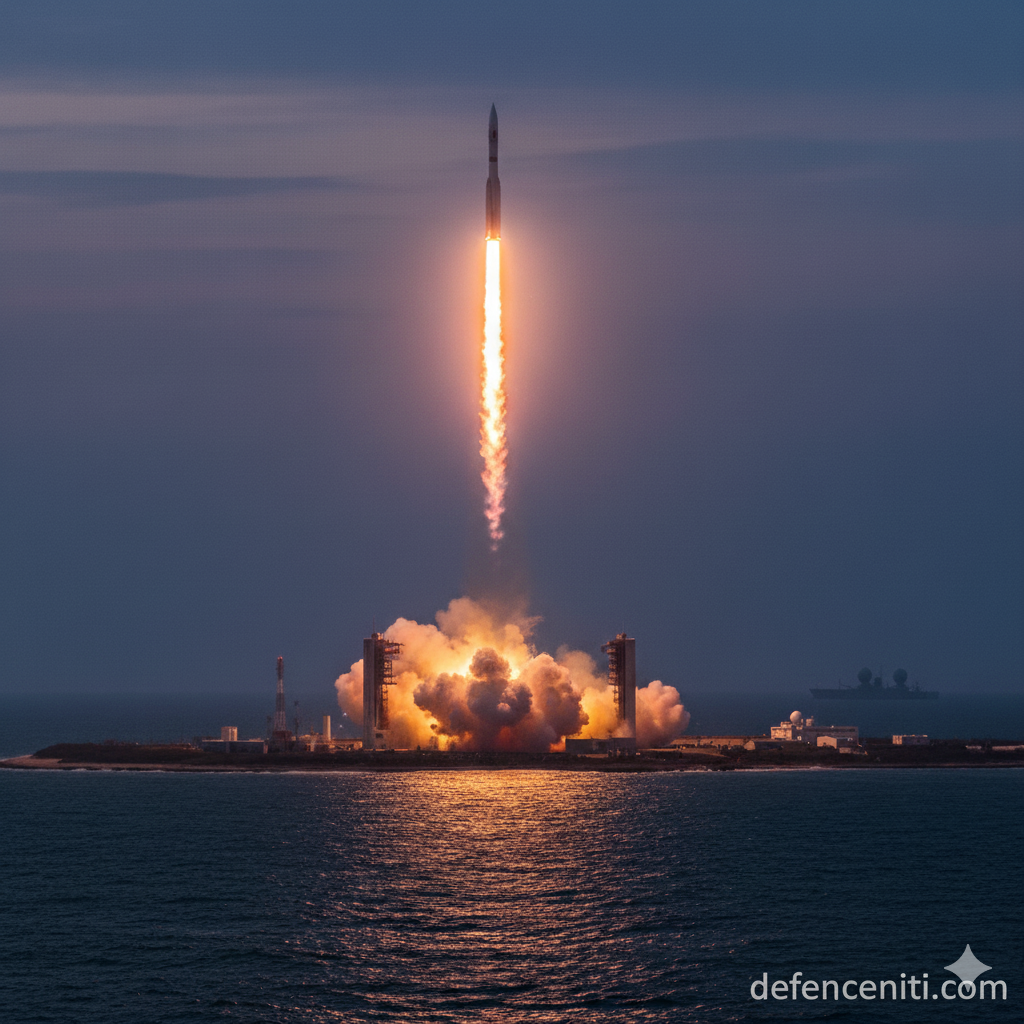NOTAM Expansion Signals Major Missile Trial: India’s Bay of Bengal Boost Amid Yuan Wang 5 Shadow
On October 15, 2025, India issued a Notice to Airmen (NOTAM) declaring a 3,550 km exclusion zone over the Bay of Bengal — the largest in recent history. Commercial flights were rerouted. Fishing vessels cleared the area. And on Dr. APJ Abdul Kalam Island, Odisha, the countdown began.
This was no routine test. The expanded corridor — stretching from 1,480 km to 3,550 km in under two weeks — signaled a long-range ICBM trial, likely the Agni-VI with MIRV (Multiple Independently Targetable Reentry Vehicle) capability. And watching from the Indian Ocean Region? China’s Yuan Wang 5 — a 6,000-tonne missile-tracking ship known for shadowing Indian launches.
The NOTAM: A Strategic Signal
NOTAMs are standard for missile tests, but this one was exceptional. The zone extended eastward toward Australia’s Cocos Islands, indicating a range exceeding 5,000 km. Previous Agni-V tests used 5,000 km corridors. This expansion hints at:
- Agni-VI prototype: 8,000–10,000 km range
- MIRV payload: 3–6 warheads per missile
- Enhanced penetration aids: Decoys, chaff, jamming
The test window: October 15–17. The platform: a mobile canister launcher — ensuring survivability and rapid deployment. The message: India’s second-strike capability is no longer theoretical.
Yuan Wang 5: The Uninvited Observer
China’s Yuan Wang 5 entered the IOR in September 2025, docking in Indonesia before transiting the Sunda Strait. AIS data placed it 800 km south of the test zone during the NOTAM period. This is not new — the same ship shadowed Agni-V tests in 2022 and 2023.
India responded with layered countermeasures:
- P-8I Poseidon aircraft from INS Rajali for real-time tracking
- INS Vikrant carrier group in southern Bay of Bengal
- Electronic jamming to degrade telemetry collection
Despite China’s efforts, India’s test data remained secure — a testament to DRDO’s growing counter-intelligence maturity.
Agni Evolution: From Prime to Pinnacle
The Agni series is India’s strategic backbone:
- Agni-Prime: 2,000 km, canister-launched, tested September 2025
- Agni-V: 5,000+ km, ICBM, MIRV-capable, in SFC inventory
- Agni-VI (under development): 8,000–10,000 km, submarine-launched variant planned
This test likely validated MIRV separation, reentry vehicle accuracy, and hypersonic glide maneuvers — critical for defeating missile defences. The Dhvani Hypersonic Glide Vehicle (HGV) test in 2024 achieved Mach 21 — and its technology is now being integrated into Agni payloads.
Strategic Implications: Deterrence Redefined
India’s nuclear triad is nearly complete. Land-based Agni missiles, air-launched BrahMos, and submarine-launched K-4/K-5 SLBMs ensure survivable second-strike. The Agni-VI extends this to full-spectrum deterrence — from regional to global reach.
China’s DF-41 (12,000 km) and Pakistan’s Shaheen-III (2,750 km) are now within India’s crosshairs. MIRVs complicate interception — one missile can strike multiple hardened targets. This shifts the balance in the Indo-Pacific, where China’s A2/AD bubble is expanding.
Integration with Layered Defence
The test aligns with broader modernization:
- Project Kusha: Phase-1 BMD for 5,000 km threats
- BrahMos-NG: Mach 3.5, wind tunnel cleared
- SFC expansion: New missile regiments in Northeast and South
By 2030, India aims for swarm-MIRV capability — dozens of warheads from a single launch, guided by AI and quantum-secure comms.
Challenges: Heat, Telemetry, and Ethics
Reentry at Mach 20 generates 2,000°C — testing materials is critical. Telemetry loss due to plasma blackout remains a hurdle. And globally, MIRV proliferation raises escalation risks — though India maintains a no-first-use policy.
The test was not just technical — it was geopolitical. As Yuan Wang 5 sailed away, India’s message was clear: We see you. We are ready.
The Bay of Bengal is no longer just water. It is India’s proving ground — where steel meets strategy, and silence precedes the storm.



